TickerTape:
Advancing Global Digital Currency: Key Stablecoin & Regulation Updates

This Week’s Stories
Senate Democrats block the GENIUS Act, a proposed bill to regulate stablecoins, arguing that it requires stronger consumer protections and raises concerns about potential benefits for former President Donald Trump. The legislation, aimed at creating a federal framework for stablecoin regulation, failed in a 49-48 procedural vote after all Senate Democrats refused to advance it. The bill had previously gained some bipartisan support, but concerns over Trump’s involvement in cryptocurrency, including his personal ventures like the meme coin and the USD1 stablecoin, complicated its progress. Democrats have proposed additional measures, including banning elected officials from owning or promoting stablecoin businesses. The legislation could still move forward if further negotiations address concerns around money laundering, foreign issuers, and accountability.
Key Takeaways:
- Bill Blocked: Senate Democrats stopped the stablecoin regulation bill, citing the need for stronger protections.
- Trump’s Involvement: Trump’s crypto ventures, including meme coins and stablecoin projects, raised concerns about potential conflicts of interest.
- Regulation Debate: Some lawmakers support federal oversight, while others worry about loopholes benefiting certain players.
- Proposed Changes: Democrats want tougher rules on money laundering and restrictions on political figures profiting from stablecoin businesses.
- Possible Future Negotiations: The bill could move forward if both parties agree on stricter consumer protections.
The United Kingdom is working on a detailed plan to regulate cryptocurrency, aiming to become a global leader in digital finance. Instead of following the EU’s lighter regulations, the UK is adopting stricter rules similar to those used for securities. These rules will require crypto businesses to provide clear financial information, maintain enough funds to cover risks, and follow strict governance standards. The framework identifies six key crypto activities that will be regulated, including trading, staking, and custody. Supporters of the plan believe it will bring clarity and help businesses grow in a stable environment. The Financial Conduct Authority (FCA) is expected to finalize the rules by 2026, setting the stage for a more structured and transparent crypto market in the UK.
Key Takeaways:
- Stricter Approach: The UK is choosing a securities-style regulation instead of the EU’s lighter MiCA rules.
- Regulated Crypto Activities: Six areas, including trading and staking, will have specific rules.
- Stablecoin Rules: UK-based stablecoins will be treated as securities, while foreign stablecoins will be available only on regulated platforms.
- Industry Support: Crypto experts and businesses welcome the clarity and structured approach.
- Implementation Timeline: The new rules are expected to be implemented by 2026.
Ki Young Ju, CEO of CryptoQuant, predicts that “dark stablecoins” could emerge as governments impose stricter controls on digital assets. Bitcoin was originally designed to be censorship-resistant, making it difficult for authorities to regulate. Stablecoins, however, rely on central entities like Tether and Circle to maintain their value, meaning they have traditionally been more vulnerable to government oversight. Until recently, most governments paid little attention to stablecoins unless they were linked to money laundering. This allowed them to thrive, especially among groups like Chinese Bitcoin miners. Now, regulations are tightening, with potential rules including smart contract taxes, frozen wallets, and mandatory identity verification. In response, Ju suggests that unregulated stablecoins may gain traction, particularly algorithmic stablecoins and those issued in countries with lenient financial policies. He also speculates that Tether (USDT) could resist compliance with U.S. laws, effectively turning it into a “dark stablecoin.” As cryptocurrency markets face increasing restrictions, Ju believes assets linked to dark stablecoins could present new investment opportunities.
Key Takeaways:
- Stricter Regulations: Governments are introducing tougher rules for stablecoins, potentially mirroring traditional banking controls.
- Types of Dark Stablecoins: These may include algorithmic stablecoins and those issued in countries with lax financial regulations.
- Potential Role of Tether (USDT): If Tether refuses to comply with U.S. laws, it could become a censorship-resistant alternative.
- Investment Potential: Ju believes dark stablecoins could create unique opportunities in a heavily regulated market.
Stripe launches an AI-driven payments model designed to improve fraud detection and streamline transactions. The system, trained on billions of real transactions, enhances security by identifying subtle fraud patterns that traditional methods often miss. Alongside this, Stripe has introduced stablecoin-based financial accounts, allowing businesses in over 100 countries to hold balances, receive payments, and send stablecoins globally. The initiative follows Stripe’s $1.1 billion acquisition of crypto platform Bridge this year. The company aims to provide entrepreneurs in countries with unstable currencies a reliable financial tool, offering inflation protection and easier access to international markets. Additionally, Stripe and Visa have partnered to launch a global debit card linked to stablecoin wallets, further integrating crypto into traditional finance
Key Takeaways:
- AI-Powered Payments: Stripe’s new model improves fraud detection by analyzing billions of transactions.
- Stablecoin Accounts: Businesses in 101 countries can now manage funds using stablecoins.
- Crypto Expansion: Stripe acquired Bridge in 2025 to strengthen its crypto offerings.
- Global Debit Card: Stripe and Visa introduced a debit card linked to stablecoin wallets.
- Financial Inclusion: The new tools aim to help businesses in countries with unstable currencies.
The Bank of Korea (BOK) emphasizes that monetary authorities should be involved in approving stablecoins if they are pegged to the Korean won. This is the first time the Bank of Korea has asserted that monetary authorities should be involved from the authorization stage. Officials warn that widespread use of won-based stablecoins could impact monetary policy, interest rates, and financial stability, requiring central bank intervention at the authorization stage. While stablecoin issuance is currently not permitted in Korea, the BOK argues that strong regulatory measures are needed to prevent risks to monetary sovereignty. The debate over regulation has become a political issue ahead of the presidential election, with candidate Lee Jae-myung supporting a domestic stablecoin market to retain national wealth. Meanwhile, disagreements between financial and monetary authorities persist over which entity should have control over stablecoin regulation.
Key Takeaways:
- First time that the BOK emphasizes the role of monetary authorities in stablecoin approval.
- Central Bank Oversight: The BOK wants the authority to approve stablecoins pegged to the won.
- Monetary Policy Concerns: Widespread stablecoin adoption could affect interest rates and money supply.
- Regulatory Debate: Financial and monetary authorities disagree on who should manage stablecoin oversight.
- Political Impact: Stablecoin regulation has become a key issue in Korea’s upcoming presidential election.
- Global Context: U.S. stablecoins like USDT are already widely used in international transactions.
Zengo, a leading non-custodial crypto wallet provider, announces a partnership with Tether, the largest stablecoin issuer, to improve access to digital asset storage. With the increasing adoption of cryptocurrency, secure self-custody solutions like Zengo Wallet are becoming essential. Zengo distinguishes itself with advanced multi-party computation (MPC) technology, eliminating the need for seed phrases while enhancing security. Tether’s backing of Zengo further strengthens stablecoin accessibility, offering users a reliable way to store and transfer USDT across multiple blockchains, including Ethereum, Tron, and Polygon. This collaboration aligns with broader efforts to integrate stablecoins into global financial systems, particularly as regulatory discussions continue. Experts believe such partnerships will drive further crypto adoption and innovation in digital finance.
Key Takeaways:
- Strategic Partnership: Zengo and Tether aim to enhance stablecoin accessibility and crypto security.
- Advanced Security: Zengo Wallet uses MPC technology to protect user assets without seed phrases.
- Multi-Blockchain Support: Users can store and transfer USDT across Ethereum, Tron, and Polygon networks.
- Regulatory Influence: Increased stablecoin adoption aligns with ongoing financial regulations worldwide.
- Crypto Expansion: The partnership supports self-custody solutions as digital finance continues to evolve.
The BIS publishes a new report outlining its work on Project Pine together with the New York Fed’s Innovation Center. The project aims to investigate the feasibility of using smart contracts in central bank operations, particularly in the context of monetary policy implementation.
According to the project’s findings, smart contracts can be used to create a generic, customizable toolkit for central banks to implement monetary policy in a tokenized world. The toolkit prototype, developed using the Ethereum Virtual Machine (EVM), was tested in various hypothetical scenarios, including interest rate tightening cycles, debt and currency crises, and quantitative easing cycles. The results showed that the prototype met all the requirements set out by central bank advisers, demonstrating its potential to improve the efficiency and flexibility of central bank operations. This would allow future central banks to be more dynamic amidst economic instability, potentially reducing challenges between the time of announcements and offering. Other notable benefits include operational efficiencies from automating collateral management.
The project’s researchers also highlighted the potential benefits of using smart contracts in central bank operations, including increased speed and flexibility in responding to unforeseen events, improved data collection and analysis, and enhanced collateral management. However, they also noted that the adoption of tokenization and smart contracts poses significant challenges, including operational risks, cybersecurity concerns, and the need for standardized data and interfaces.
Key Takeaways:
- Project Pine explores the potential of using smart contracts in central bank operations, particularly in monetary policy implementation.
- The project developed a generic, customizable toolkit prototype using EVM.
- The toolkit prototype was tested in various hypothetical scenarios and met all the requirements set out by central bank advisers.
- Smart contracts can increase speed and flexibility in responding to unforeseen events, improve data collection and analysis, and enhance collateral management.
- The adoption of tokenization and smart contracts poses significant challenges, including operational risks, cybersecurity concerns, and the need for standardized data and interfaces.
Why it Matters:
- Project Pine provides insights into the potential applications of DLT and tokenization in central bank operations.
- Using this as a framework to explore new technologies that can improve the efficiency and flexibility, and security of financial transactions.
- Findings can inform policymakers, regulators, and financial institutions about the potential benefits and challenges associated with adopting tokenization and smart contracts.
The Wyoming Stable Token Commission has partnered with Inca Digital to enhance security and fraud detection for WYST, Wyoming’s first state-backed stable token. Inca Digital will provide advanced analytics and cross-market oversight to identify potential risks before WYST’s anticipated July 2025 launch. Wyoming has long positioned itself as a crypto-friendly hub, passing over 35 blockchain laws since 2018 and attracting 3,000+ tech companies. Once launched, WYST will be fully backed by U.S. Treasuries, cash, and repurchase agreements and redeemable for one U.S. dollar, setting a new precedent for state-managed digital currencies.
Key Takeaways
- Regulatory Security: Wyoming partners with Inca Digital to monitor fraud risks ahead of WYST’s launch.
- First U.S. Public Stable Token: WYST will be fully reserved and fiat-backed, ensuring greater transparency.
- Wyoming’s Blockchain Leadership: The state has passed 35+ laws and attracted over 3,000 crypto firms.
- Asset-Backed Stability: WYST will be pegged to U.S. Treasuries, cash, and repurchase agreements.
- Stablecoin Market Growth: The sector is valued at $245 billion and could expand to $2 trillion in three years.
Why It Matters
- Fraud Detection & Risk Mitigation: Inca Digital provides advanced analytics to detect fraud and security threats before WYST’s launch, ensuring safe and transparent transactions.
- Cross-Market Oversight: With real-time monitoring, Inca Digital helps Wyoming’s Stable Token Commission safeguard WYST against market manipulation and illicit activities.
- Regulatory Compliance Support: Wyoming has a strong blockchain regulatory framework, and Inca Digital’s data-driven insights ensure that WYST adheres to legal and financial requirements.
- Strengthening Wyoming’s Blockchain Leadership: By leveraging Inca Digital’s cutting-edge security tools, Wyoming solidifies its position as a pioneer in state-backed digital currencies.
- Setting a Standard for Stablecoin Security: Inca Digital’s role in threat detection and fraud prevention could serve as a blueprint for future government-managed stablecoins in the U.S.
Thailand’s Ministry of Finance is moving forward with plans to issue a 5 billion baht ($150 million) government digital bond within the next two months. The G-Token, as it’s called, will allow retail investors to participate with as little as 100 baht, significantly lowering the entry barrier compared to traditional government bonds.
The initiative is part of Thailand’s broader efforts to modernize bond issuance using blockchain technology, streamlining processes and reducing delays between issuance and trading. The country’s Securities Exchange Commission (SEC) is also developing a digital bond trading system, which will enable these tokens to be traded on licensed digital asset exchanges.
Key Takeaways
- Thailand’s Digital Bond Initiative: Issuing $150M in government digital bonds to enhance accessibility.
- Retail Investor Participation: Minimum investment set at 100 baht, making bonds more inclusive.
- Blockchain Integration: The SEC is developing a digital bond trading system to improve efficiency.
- Market Testing: The initial issuance aims to test investor interest and liquidity before scaling up.
Why It Matters
- Financial Inclusion: Lowering investment barriers allows more people to participate in government bond markets.
- Blockchain Adoption in Finance: Thailand is digitizing bond issuance, reducing inefficiencies in traditional systems.
- Regulatory Innovation: The SEC’s digital bond trading system could set a precedent for other nations exploring tokenized bonds.





